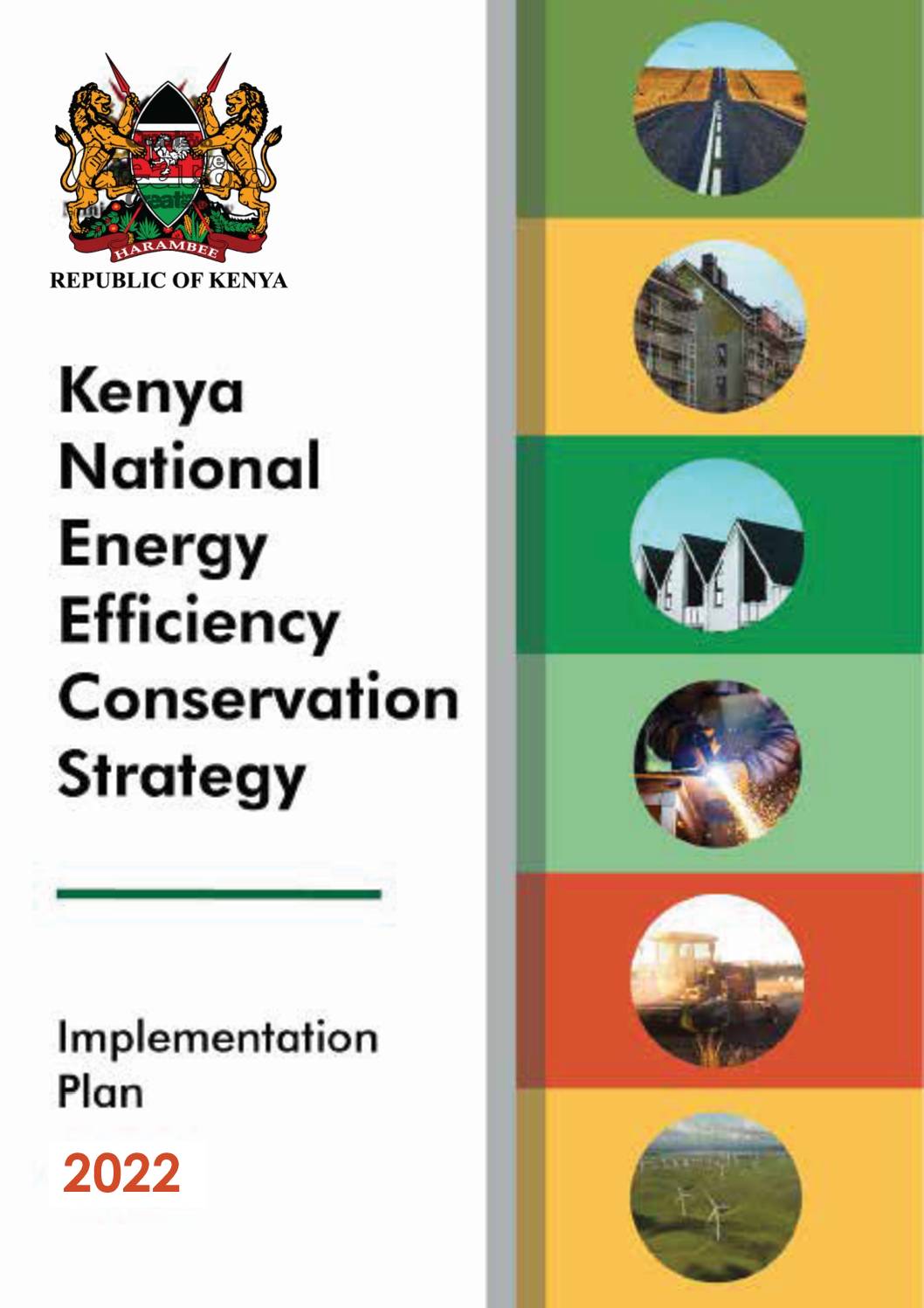The Ministry of Energy partnered with the Copenhagen Centre on Energy Efficiency (CCEE) and other development partners to develop and implement the Kenya National Energy Efficiency and Conservation (KNEECS) Strategy. The development phase was completed and launched in September 2020. The Strategy’s main goal is to help the country transit to energy efficiency systems and enhance energy conservation. It aspires to use best practices that promote affordable and sustainable energy for all.
The second phase of this program constitutes development and adoption of the implementation plan. In this phase, the Ministry reconstituted the Technical Committee to develop an Implementation Matrix. Currently the Copenhagen Centre on Energy Efficiency has partnered with the Ministry of Energy and the World Bank in this phase, through the Technical Committee.
This document articulates the methods, responsible parties, tools, financial requirements and timelines that will be useful for implementation of the KNEECS and the continuous monitoring, control, evaluation and reporting of its outputs, outcomes and impacts. This framework will help the Ministry of Energy and the stakeholders to regularly report progress and make necessary adjustments to the KNEECS during implementation, as a response to any emerging issues. The framework (referred to as the strategy implementation matrix), contains thematic areas of KNEECS, the objectives, the outputs, the key performance indicators, the targets, the timelines, the responsible parties and the associated costs.
Download sourceShare this

Sectors: Cross cutting, Urban Climate Neutrality
Country / Region: Kenya
Tags: agriculture, buildings, energy utilities, gender, manufacturing, transport, vocational educationIn 1 user collection: Urban Climate Neutrality (Kenya)
Knowledge Object: GPUC, Publication / Report
Publishing year: 2022
